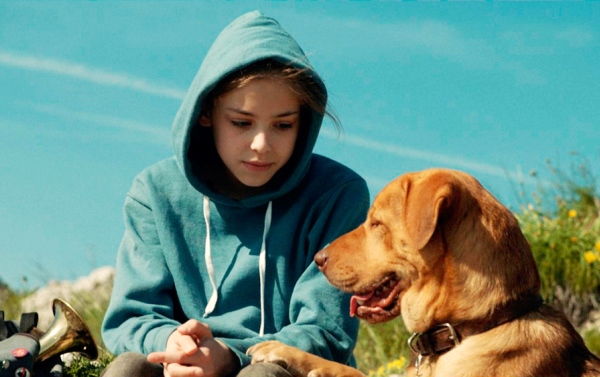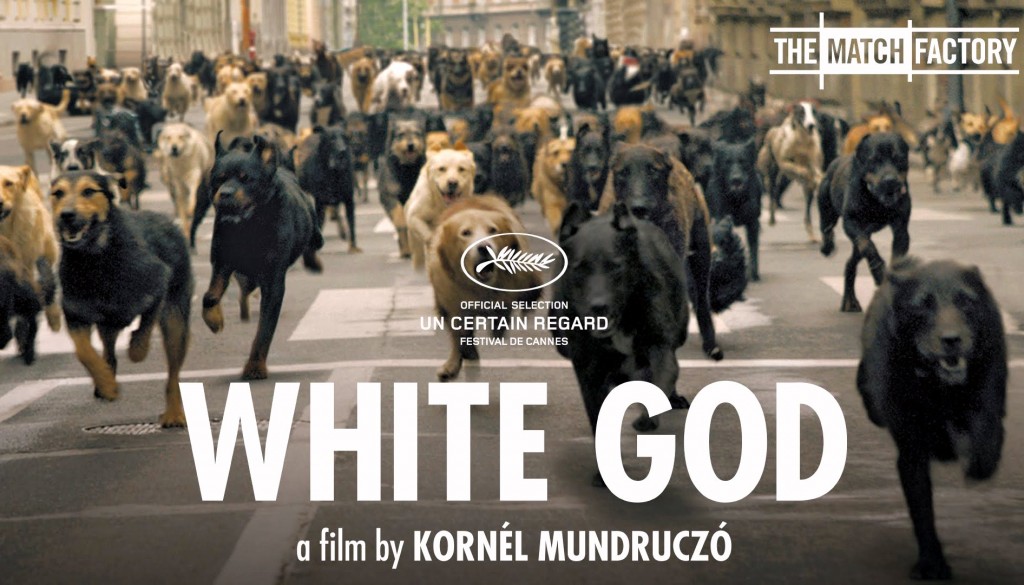
Bright idea that goes to waste. White God (Hungarian, in English subtitles) is about how 13-year old Lili (Zsofia Psotta) loses her beloved dog, Hagen, that once left to the streets becomes a victim of a ruthless human society. Hagen must square off against casual dog haters, gypsies who organize dog-fighting rings and the unkind dog-catchers from the animal shelter. After an hour of heavy-handed drama, Hagen leads a revolt from the dog-pound in what is a “Spartacus” homage. The director, Kornel Mundruczo, worked with 274 dogs (a world record in film) that he films as the pack dashes through the streets of Budapest and scaring people to retreat into their homes. But does Mundruczo seize any cinematic opportunities with this?
Yes, he does. There are some amazing shots in this movie, enough to fill two dozen movie posters. But Mundruczo is so restless that he throws on dozens and dozens of unnecessary, less than thrilling shots, clouding all the good material.
The dogs, in what is a fantasy where they have cognition in their revenge, go back and tear apart all of their former abusers with their claws and teeth. No matter how tastefully these dog attacks are cinematically framed at a distance, watching this becomes not emotionally charged but monotonous.
There is also the story of Lili who goes on a search for her animal. We know two things about her right away: She shows promise with her trumpet at music school. And she has repulsion for her father, an overseer at a slaughterhouse who has little sympathy for animals. On a multi-week search for Hagen, Lili finds herself sidetracked from her search with boys, with alcohol, and general trouble. This is like the moral descent of your typical teenage good girl unjustly tarnished fable, like it were a holier than thou Robert Bresson film. I’ve never enjoyed Bresson’s “Au Hasard Balthazar” (1966) or “Mouchette” (1967), but I understand some film snobs like them.
“White God” is a case where the second hour is a payoff from the first hour. When Lili sees Hagen in the second hour leading the cinematically radical dog revolt, she is, um, a whole person again. We hear trumpet music on the soundtrack as she joins the pack, and possibly, the dogs see Lili as God? The question mark is deliberate since I’m unsure myself. If Lili is the White God, then the symbolism is weakly implied.
Viewers might be looking at the dog abuses as an allegory, as a stand-in for human abuses, but they will have to surmise for themselves what specifically those would be. The scenes of the dog-fighting ring is a retread of Alejandro Gonzalez Inarritu’s “Amores Perros,” and further to point, the filmmaking itself is a recycling of Inarritu’s tricks of shaky cams and naturalism. There are so many shots of animal exploitation here that any deeper message gets bogged down.
Half of the material is good. Mundruczo will become a good director when he learns to dispose of all the redundant material. And when he learns to stop visually quoting other directors like Bresson and Inarritu so much, whom he should aspire to be better than them in the first place.
121 Minutes. Rated R. Hungarian in English subtitles.
FOREIGN FILM / FOOD FOR THOUGHT / LAZY COUCH MOVIE
Film Cousins: “Spartacus” (1960); “White Dog” (1982); “Amores Perros” (2000, Mexico); “Hachi: A Dog’s Tale” (2009).





